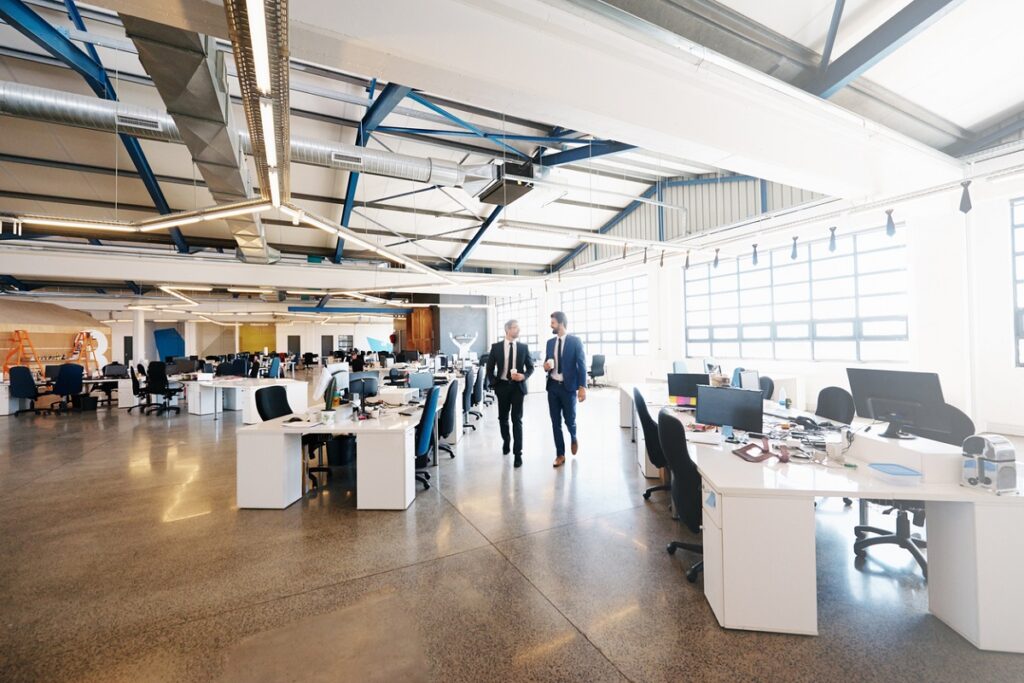Today’s professionals have a new world of work at their fingertips. Unemployment rates are at an 11-year low, and as an ever-increasing number of opportunities open up, employees are able to consider what they want from their workplace – and find an employer that meets their needs.
We recently spoke to workers across the UK, who revealed that the culture of their organisation has a huge impact on both their ability to perform well, and the likelihood they would choose to stay in their role. Somewhat disconcertingly though, we identified a clear disconnect between what employees want and what their employers are providing.
The research – based on insights from 2,000 employees across the UK – found that over half of UK professionals (53%) will consider moving jobs unless their organisation changes. Key concerns cited include feeling held back by the structure of the workplace (55%) or workplace culture (53%), whilst the overwhelming majority (74%) revealed that they want more freedom at work.
It is evident that many employers are struggling to keep pace with the desires and expectations of their people. As rigid, siloed structures become something of the workplace past, 2017 and all the change it brings provides the perfect opportunity for businesses to re-evaluate their culture and start embracing a more flexible environment.
So how can we go about making this change happen? We’ve identified three steps to help organisations foster flexible, collaborative workplaces that ensure their employees thrive.
Recognise when it’s time for change
Competitive and segmented workplace cultures come hand in hand with stifled creativity and, therefore, productivity.
We now know that it’s the workplaces in which employees across all levels and disciplines are encouraged to work together and share ideas that see the best results – and that such an environment is something workers across the UK are craving.
Over half of UK professionals will consider moving jobs unless their organisation changes.
Our research shows that 35% of professionals are calling out for more flexibility, as well as innovation and creativity (32%) in the workplace. It is clear that for employers looking to secure the future success of their business, listening to their employees and doing what they can to deliver what they’re looking for, is a good place to start.
Breakdown boundaries
If businesses are to foster a truly collaborative work environment, the first step is to break down any barriers which may inhibit them from doing so.
Bringing teams together from different departments will open up streams of communication which are conducive to innovation and creativity. New workplace architectures such as open plan offices, glass walls and space dedicated to creative thinking or quieter contemplation have done much to facilitate teamwork. Yet our research found that a sense of collaboration is often still lacking; for example, 66% of UK employees want to have a greater say in their organisations.
Whilst ad-hoc and impromptu collaborative sessions such as cross-desk conversations are often useful, scheduled time to work collaboratively, such as team huddles and brainstorming sessions, can be incredibly valuable. By putting in place dedicated sessions where anyone, regardless of level, has the opportunity to offer up suggestions and opinions, businesses will help spark new ideas, identify unknown talents, and give employees the space to feel heard.
One of the most effective ways to break down silos is by maximising opportunities for talented employees to get involved in cross-functional projects, which aid collaboration, and improve creativity and product and process innovation.
Lead by example
No matter how far organisations go in creating opportunities for employees to collaborate, it will be wasted without the support of leadership and a deliberate change in culture.
Currently, only a quarter (24%) of UK employees say that their managers definitely foster collaboration. If collaboration is going to prevail throughout the workplace, it’s down to those at the top to lead by example, and for senior professionals to actively encourage and work with junior staff in as many ways as possible.
By engaging team members at all levels, and adopting a flatter structure for decision-making, employers can quickly improve employees’ understanding of their business, strengthen internal networks and ensure everyone is part of its growth.
It is evident that collaboration and flexible working structures hold a wealth of benefits for companies, especially ahead of a challenging year. By moving away from the typically rigid, hierarchical structures and being more forward-thinking, businesses will build a more passionate and dedicated workforce; one which is aligned with the company’s vision and objectives – and better able to cope with whatever the coming months hold.






